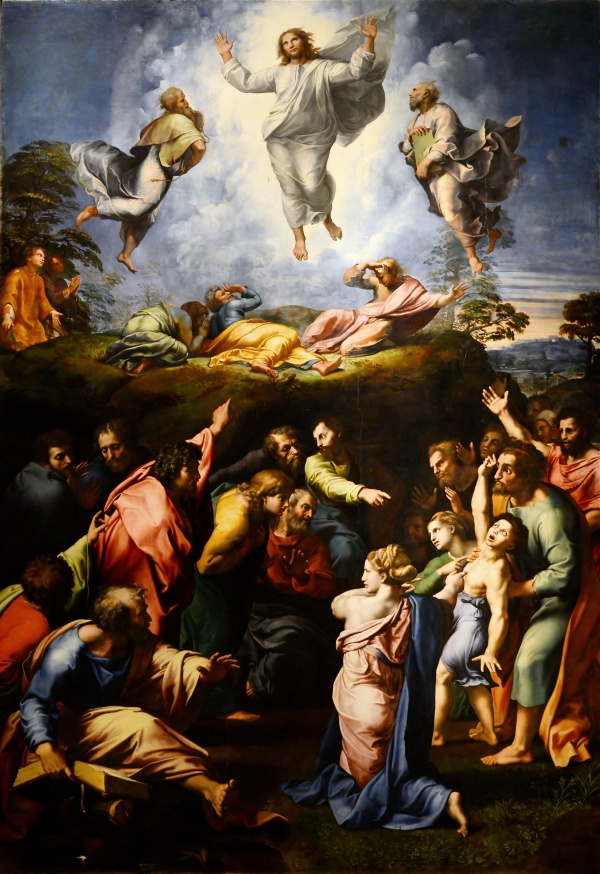Facts About The Transfiguration
"The Transfiguration" is the final masterpiece by the illustrious Italian High Renaissance artist Raphael. Commissioned by Cardinal Giulio de Medici, who later ascended to the papacy as Pope Clement VII, this work was intended to serve as an altarpiece for Narbonne Cathedral in France. The painting not only exhibits Raphael's advanced artistic skills but also represents the zenith of his career. Its unique juxtaposition of the Transfiguration of Jesus with the subsequent Gospel episode underscores the transformative power of divine revelation. Today, this iconic piece is housed in the Pinacoteca Vaticana in Vatican City.
The backstory of the painting is intriguing. Raphael found himself in competition with Michelangelo, who had provided sketches for a rival artwork. This competitive spirit heavily influenced Raphael's approach, prompting significant modifications during the painting's creation, and drawing inspiration from the writings of Blessed Amadeo Menes da Silva. After Raphael's untimely death in 1520, "The Transfiguration" was exhibited alongside another work in the Vatican.
The reception of "The Transfiguration" has evolved over the centuries. Initially hailed as a paragon of artistic excellence, it later faced criticism for its composition. During the Napoleonic era, the painting's notoriety surged when it was transported to Paris, although it was eventually repatriated to Rome. Despite the shifting tides of artistic taste, especially with the advent of new ideals in the 20th century, the painting's fame has endured.
Reproductions of "The Transfiguration" have perpetuated its legacy, with countless copies and engravings made over the years. The painting's iconography is rich and multilayered, portraying two distinct biblical narratives from the Gospel of Matthew. The lower section illustrates the Apostles' futile attempts to heal a possessed boy, thereby accentuating Christ's miraculous healing powers.
Scholars have extensively analyzed and interpreted "The Transfiguration" exploring its historical context, symbolic elements, and Raphael's artistic techniques. Many consider it a precursor to both Mannerism and Baroque painting. Prominent figures such as Nietzsche and Vasari have offered their insights into the painting's themes and its profound significance within the art world.

 San Marino
San Marino